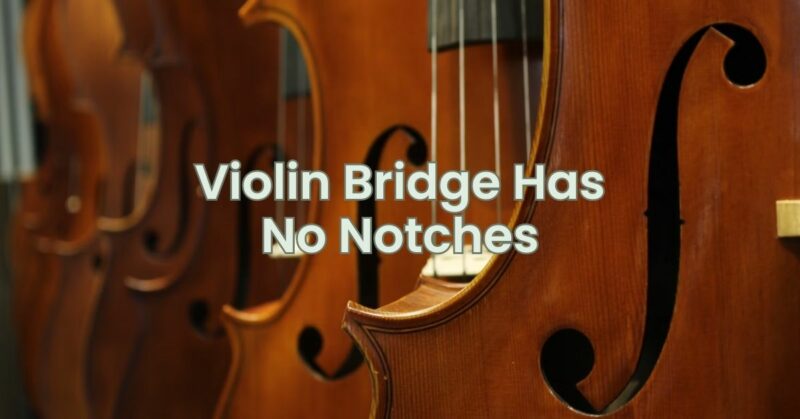When examining a violin bridge, it is common to see notches or grooves carved into the top surface to hold the strings in place. However, some violin bridges may appear smooth without any visible notches. This unique design choice raises questions about its functionality and impact on the instrument’s playability and sound production. In this article, we will explore violin bridges without notches and shed light on their purpose and implications.
- The Function of Notches: Traditionally, notches or grooves are carved into the top surface of a violin bridge to secure the strings. These notches serve several essential functions:
- String Alignment: The notches ensure that the strings are aligned and properly spaced across the fingerboard. They help maintain uniform string height, ensuring easy playability and accurate finger placement.
- String Stability: Notches prevent the strings from shifting or slipping out of position during vigorous playing or changes in string tension. They help keep the strings securely in place, allowing for consistent tuning and stable intonation.
- Bridges without Notches: While notches are the conventional approach, some violin bridges are intentionally crafted without visible notches. This design choice is usually seen in specialized or custom-made bridges and may have specific purposes:
- Enhanced Tonal Characteristics: By eliminating the notches, more wood is left intact on the top surface of the bridge. This can contribute to the bridge’s overall mass and may influence the instrument’s tonal response, resonance, or projection. Bridges without notches are often designed with specific tonal goals in mind.
- String Contact Area: Without notches, the strings make direct contact with the bridge’s smooth surface. This may offer a slightly different tonal quality, potentially affecting the instrument’s overall sound production or the player’s perception of the instrument’s response.
- Individual Player Preference: Some violinists and luthiers prefer bridges without notches based on personal preference or experimentation. They may believe that the absence of notches provides a smoother feel or specific tonal benefits that suit their playing style or musical needs.
- Considerations and Adjustments: If you encounter a violin bridge without notches, there are a few considerations and adjustments to keep in mind:
- String Placement: When restringing the instrument, take care to align the strings properly and maintain even spacing across the fingerboard. Pay close attention to string alignment and ensure the strings do not touch neighboring strings.
- String Stability: Without notches, it becomes even more crucial to maintain stable string tension and regular tuning. Regularly check the string tension and adjust as needed to ensure stability during playing.
- Seeking Professional Advice: If you are uncertain about the impact of a bridge without notches on your instrument’s playability or sound, it is advisable to consult a professional violin maker or luthier. They can assess the bridge’s design and provide expert guidance based on their knowledge and experience.
Conclusion: While notches are a standard feature on violin bridges, bridges without visible notches exist as a specialized design choice. These unique bridges may offer specific tonal characteristics or fulfill the preferences of individual players and luthiers. Although notches serve important functions in string alignment and stability, bridges without notches may have their own distinct advantages and considerations. If you encounter a violin bridge without notches, pay attention to proper string alignment and stability, and consult a professional if you have any concerns or questions. With the right bridge design and setup, your violin will continue to produce beautiful tones, ensuring a fulfilling musical experience.

